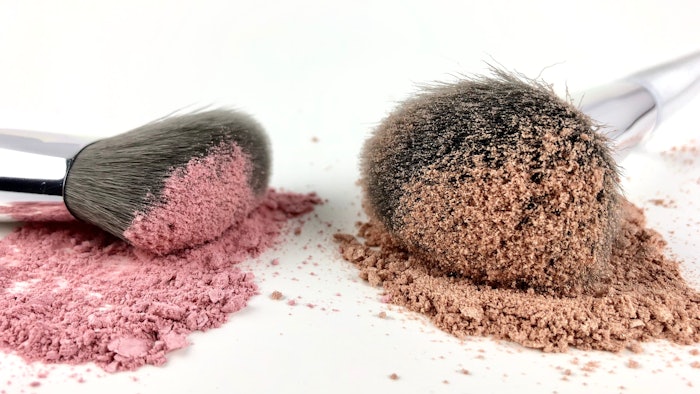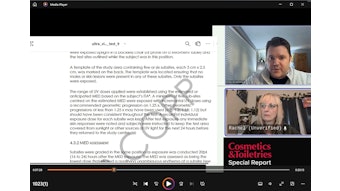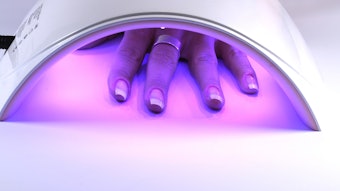
On Dec. 26, 2024, the U.S. Food and Drug Administration (FDA) proposed test methods by which cosmetic manufacturers would be required by the Modernization of Cosmetics Regulation Act of 2022 (MoCRA) to assess talc-containing products for asbestos, along with enforcement provisions. This would impact a cosmetic grade talc powder market valued at US $3.5 billion in 2023, which is expected to reach $5.2 billion by 2031 (4.2% CAGR from 2024 to 2031), per Market Research Intellect.
Issuing this proposal fulfils the FDA's task mandated by MoCRA under section 3505, wherein the Secretary of Health and Human Services is required to propose "regulations to establish and require standardized testing methods for detecting and identifying asbestos in talc-containing cosmetic products." The deadline for public comments on the FDA's proposal is March 27, 2025.
FDA-proposed Test Methods to Identify Asbestos
The proposed test methods to identify asbestos in talc-containing products are outlined in the Federal Register. These include:
- Polarized Light Microscopy (PLM, with dispersion staining) and
- Transmission Electron Microscopy/Energy Dispersive Spectroscopy/Selected Area Electron Diffraction (TEM/EDS/SAED).
"Although PLM has much lower magnification than TEM/EDS/SAED by about two orders of magnitude, PLM provides for a larger amount of sample to be analyzed in comparison to when a sample is prepared for TEM/EDS/SAED analysis," explains the FDA, in the Federal Register. "Therefore, combining TEM, which enables detection of smaller fibers, with PLM, which enables testing of larger samples, gives the best chance of detecting asbestos."
PLM testing: More specifically, for PLM testing, detecting and identifying asbestos would be required to be based on comparison of optical crystallographic properties (i.e., color and pleochroism, refractive indices, birefringence, extinction characteristics and sign of elongation) and particle morphology with data for and images of asbestos in indicated references.
TEM/EDS/SAED: For TEM/EDS/SAED, detecting and identifying asbestos would be required to be based on comparison of elemental composition, crystal structure of particles and particle morphology with data for and images of asbestos in indicated references.
For additional details on testing and data/imaging requirements, see the Federal Register, Part V, Description of the Proposed Rule, Section C: What test methods must you use?
Manufacturers: Test Products or Ingredients, or Verify Certificates of Analysis
Using these tests, manufacturers would be required to evaluate representative samples of each batch or lot of either their talc-containing cosmetic products or the ingredients used in their products. Manufacturers may also rely on a certificate of analysis from the talc supplier if they qualify the supplier by establishing and maintaining the reliability of the certificate via verification testing.
Asbestos Tests Align with Scientific Opinion
Per the FDA, the proposed methods align with scientific opinions from an Interagency Working Group on Asbestos in Consumer Products (IWGACP), which were released in a White Paper (IWGACP White Paper) and related Technical Appendices in January 2022, both of which were peer-reviewed.
"The requirement for the use of PLM and TEM/EDS/SAED in tandem is consistent with established scientific opinions recognizing the limitations of PLM in the realm of analysis for asbestos in talc and talc-containing cosmetic products, which may result in false negative test results," states the FDA, in the Federal Register.
Asbestos Tests Align Across Regions, Industries
"The new proposed U.S. standard for asbestos testing in talc is now in line with global standards," noted John Misock, senior consultant at Ceutical Laboratories and former FDA regulatory microbiologist. "The European Union, Canada and Japan have established stringent regulations to ensure talc products are free from asbestos contamination following similar testing protocols as those in the U.S. proposal.
"Microscopy techniques such as Polarized Light Microscopy (PLM) and Transmission Electron Microscopy (TEM) for accurate detection of asbestos are followed globally. These standardized methods not only protect consumer health by minimizing asbestos exposure but also facilitate international trade by ensuring consistency and compliance across borders. Uniform standards enhance consumer confidence in the safety of talc products globally, highlighting the importance of common international regulations.
"Talc is used as an ingredient in many industries, including food and pharmaceuticals," Misock continued. "Similar testing methods are followed across the industrial spectrum. The risk in cosmetics is due to inhalation of asbestos."
Asbestos Adulteration Provisions
The proposed rule also includes corresponding adulteration provisions. "We propose that failure to operate in compliance with the testing or recordkeeping provisions of the rule would render the talc-containing cosmetic product adulterated under 601(c) for the Federal Food, Drug and Cosmetic Act (FD&C Act) [21 U.S.C. 361(c)]," states the FDA.
"In addition, ... if asbestos is present in a cosmetic product, or in talc used in a cosmetic product, that cosmetic product would be deemed adulterated under 601(a) of the FD&C Act [21 U.S.C. 361(a)]; and if asbestos is present in talc intended for use in a cosmetic, that talc is adulterated under 601(a) of the FD&C Act [21 U.S.C. 361(a)]," (italics added for emphasis).
Ensuring the Safety of Talc-containing Cosmetics
Per the FDA, this proposed rule, if finalized, would protect consumers by, to the extent it reduces exposure to asbestos, resulting in fewer asbestos-related illnesses. Manufactures would also benefit from fewer recalls of talc-containing cosmetics.
“For many years the FDA has been sampling and testing talc-containing cosmetics for asbestos as well as working with our federal partners on efforts to reduce consumers’ risk of exposure to asbestos, a known human carcinogen, from contaminated talc-containing cosmetic products,” said Linda Katz, M.D., director of the FDA's Office of Cosmetics and Colors, in an FDA news release.
“We have carefully considered the scientific evidence and complex policy issues related to detecting and identifying asbestos in talc and talc-containing cosmetic products. We believe that the proposed testing techniques are appropriate methods to detect asbestos to help ensure the safety of talc-containing cosmetic products.
Comments on the proposed rule are due on March 27, 2025.
FDA's New Enforcement Policy: Faster and Electronic
Misock additionally highlighted a change in the FDA's talc enforcement policy. "In following with the language in MoCRA, if a responsible person uses talc as an ingredient, they must provide that information to the FDA within one day, electronically," he writes.
"The proposal specifically states that the FDA will no longer rely on an inspector's physically copying results any more, as was practiced in the past. This is a significant change in the FDA’s enforcement policy. MoCRA mandates the availability of multiple records [and] the failure to provide any record in time may result in immediate regulatory action."
FDA's Proposal Fills a Partial MoCRA Gap
As stated, the Dec. 27, 2024, published proposal fulfils the FDA's task mandated by MoCRA to establish and require standardized testing methods to detect and identify asbestos in talc-containing cosmetic products. The original deadline for such was July 2024; this was extended from the original deadline of Dec. 29, 2023.
Based on comments from Jaclyn Bellomo, director of cosmetic services and software at Registrar Corp., in a September 2024 C&T webinar, issuing this proposal fills a partial gap expressed by manufacturers in terms of what they feel is missing from MoCRA guidance.
"The [biggest] thing that I hear is 'why couldn't the FDA tell us what tests to do for safety? ... Can't they just tell us what we need to do? Because we're sort of unsure if we're doing too little or if we're doing too much ... Testing is very expensive, so no one wants to do too much, putting themselves financially [in a tough place] ...'," explained Bellomo.
"So having the right direction and support of, 'Here's my product; this is what it's intended to do; here are cases where it could [be] misused or potential risks for adverse events to occur' ... is, I think, the biggest part that they had wished MoCRA could have given them."
Bellomo's comment underscores a larger industry need, especially for SMEs, to fill gaps in understanding safety testing standards for cosmetics in general. With its present proposal, of course, the FDA is specifically addressing testing for asbestos in talc; but it's one less gap to fill.










